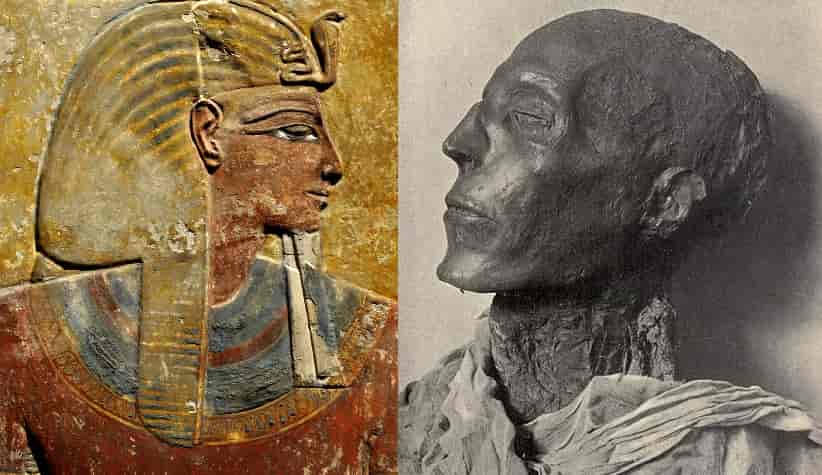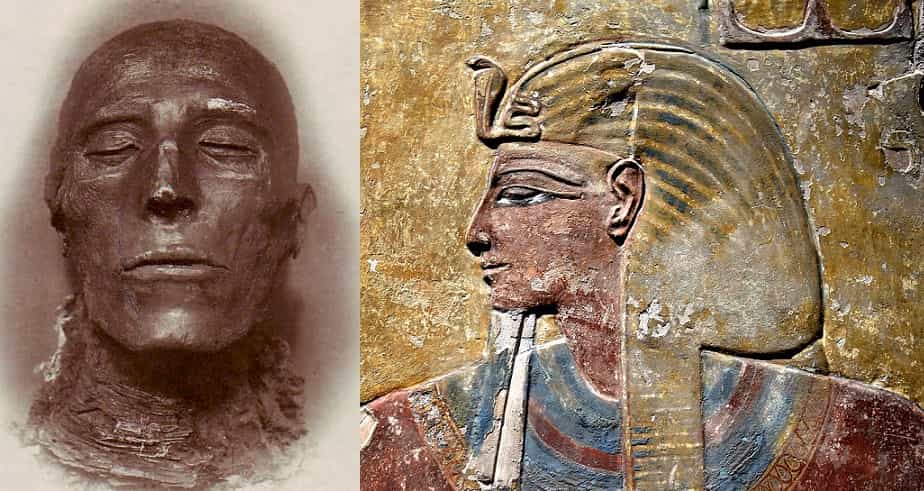The body of Pharaoh Seti I remained in his tomb for an extended period, until the conclusion of the 20th dynasty. This fact is confirmed by one of his wooden coffins, which was restored by the high priest Herihor and later, during the reign of Smendes I in the 21st dynasty.
By that time, it is likely that the mummies of Seti I’s father and son, Kings Ramesses I and II, had already been relocated to KV17. This primary hiding place was well known to the priests of Amun and was revisited at least once during the reign of Pinedjem I, during which the mummy of Seti I was rewrapped in new linen.
Ramesses I, Seti I, and Ramesses II bid a final farewell to KV17 in the 10th year of Siamun when, along with the bodies of other great kings of the New Kingdom, they were moved to a more secure location.
There was no further mention of the mummies until the late 19th century, when a surprising discovery was made in the tomb DB320 of Deir el-Bahari. It is believed that the mummies sought refuge there after a brief stay in another tomb known as the kay of Queen Ahmose-Inhapi.
Once found and accurately identified, Seti I’s mummy is arguably the best-preserved among all the royal remains, commanding immense respect with a serene and majestic presence.
Although Seti I’s facial features are in optimal condition, the rest of the mummy has endured some damage, likely due to transportation or at the hands of thieves; the abdomen and neck are both broken.
Nevertheless, the most astonishing revelation brought by the corpse of the 19th dynasty’s second pharaoh was not merely the discovery of overlooked amulets among the bandages, but rather the finding that the heart had been placed in the king’s chest on his right side.
This peculiar occurrence has sparked speculation that Seti I might have died due to cardiovascular issues. Given his historical struggle with a heart positioned on the left side, the embalmers seemingly decided that for his afterlife, it would be more appropriate to place it on the right side.
Alternatively, some view it as a mere error committed by the embalmers. Nonetheless, it remains an unprecedented event not observed in other royal Egyptian mummies.







